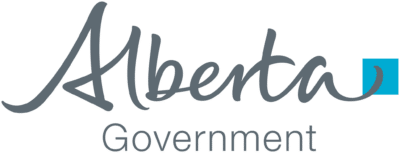Written by Evelyn Mytka, Contributing Writer
Getting turned down for a business loan can be frustrating, even disheartening, especially when you’re ready to grow or need support during a challenging time. But a rejection doesn’t mean the end of the road. In fact, it’s often the start of a more informed, strategic approach to financing.
Here’s what to do next if the bank says no.
Understand Why Your Application Was Denied
Banks rarely reject a loan for no reason. According to Statistics Canada, 41% of loan denials result from weak cash flow and 32% from insufficient collateral. While they don’t always offer detailed feedback, some common reasons include:
- Inconsistent or poor cash flow
- Insufficient collateral
- Low personal or business credit scores
- Missed Canada Revenue Agency (CRA) payments
- Too much existing debt
- Lack of business history or early-stage status
- Weak or unclear business plan
- Industry risk or other external market conditions
Some of these factors, like your industry or the economy, are out of your control. But many others can be addressed with time and preparation.
Improve Your Odds for Next Time
Before reapplying, take the time to build a stronger case.
Check and Improve Your Credit Score
You can access your credit report through Equifax or TransUnion. Review it for errors, pay down outstanding debts, and make sure your credit accounts all have consistent information (name, address, etc.).
Even modest improvements in your credit score can make a big difference in how lenders view your application. It may take 6–12 months, but it’s a worthwhile investment in your business’s future.
Build a Solid Business Plan and Cash Flow Forecast
A lender wants to see that you’ve thought things through and that your business can repay the loan. A well-written business plan and cash flow forecast are key.
Need help? Business Link’s free Business Plan Builder and our Business Strategists can guide you through the process.
If cash flow is a sticking point, consider trimming non-essential expenses or negotiating better terms with suppliers. Even short-term cost-saving measures can strengthen your application. If you need help getting a clear picture of your cash flow, check out our Cash Flow Canvas Bootcamp.
Be Strategic With Collateral
Putting up collateral can reduce the risk for lenders. That might mean using equipment, inventory, or even personal property (like your home) to secure the loan. It’s not always ideal, so consider the risks carefully and make sure you have a repayment plan in place.
Explore Alternative Financing Options
If the bank still says no, you’re not out of options.
Alternative lenders and non-traditional financing models have grown significantly in Canada, with a wide range of solutions for small businesses. Some of the most common options include:
- Crowdfunding: Businesses raise money by collecting small contributions from a large number of people, usually through an online platform. There are several models: donation-based, reward-based (offering a product or perk), or equity-based (offering ownership).
Example: An independent board game developer uses Kickstarter to raise $30,000 for production by offering early access and exclusive editions to backers.
- Grants: Grants are non-repayable funds provided by governments or organizations to support specific types of businesses or projects. They often come with eligibility requirements and application deadlines.
Example: A tech startup in Alberta receives funding through the Alberta Innovates Voucher Program to develop a prototype.
- Equipment leasing: Instead of buying equipment outright, businesses lease items like commercial kitchen appliances, construction machinery, or point-of-sale systems. This helps preserve cash flow and often includes maintenance.
Example: A new bakery leases its ovens and mixers instead of purchasing them upfront.
- Purchase order or inventory financing: Lenders advance the funds needed to pay suppliers for large customer orders, which are then repaid once the business receives payment from the customer.
Example: A clothing supplier gets funding to fulfill a large order without using its own working capital.
- Sale-leasebacks: A business sells an asset (like real estate or equipment) and then leases it back from the buyer, freeing up capital.
Example: A landscaping company sells its work vehicles and leases them back to improve liquidity.
These can be great options, especially for businesses that are growing quickly but don’t yet meet all the requirements for a traditional loan.
You might also consider working with a business loan broker who can help match you with lenders based on your needs and current financial situation.
To explore the full range of funding options available, including government grants, loans, and alternative financing, check out our Financing Your Business resource.
Don’t Go It Alone
Rejection can feel like a setback, but it’s also an opportunity to learn, plan, and come back stronger. At Business Link, we’re here to help you understand your options, strengthen your financial foundation, and explore funding that fits your goals.
Book a free consultation with one of our Business Strategists to talk through your financing options and get personalized support.
Sources
Getting your credit report and credit score – Government of Canada [2024]
Improving your credit score – Government of Canada [2025]
Comprehensive Review Report of the Canada Small Business Financing Program 2014–2019 – Innovation, Science and Economic Development Canada [2020]
Top Reasons Small Business Loan Applications Get Rejected – Driven [2024]
Top 10 Reasons SMEs Are Denied Business Loans – Factoring Companies Canada
How Long Does It Take to Build Credit in Canada? – Credit Canada [2024]






